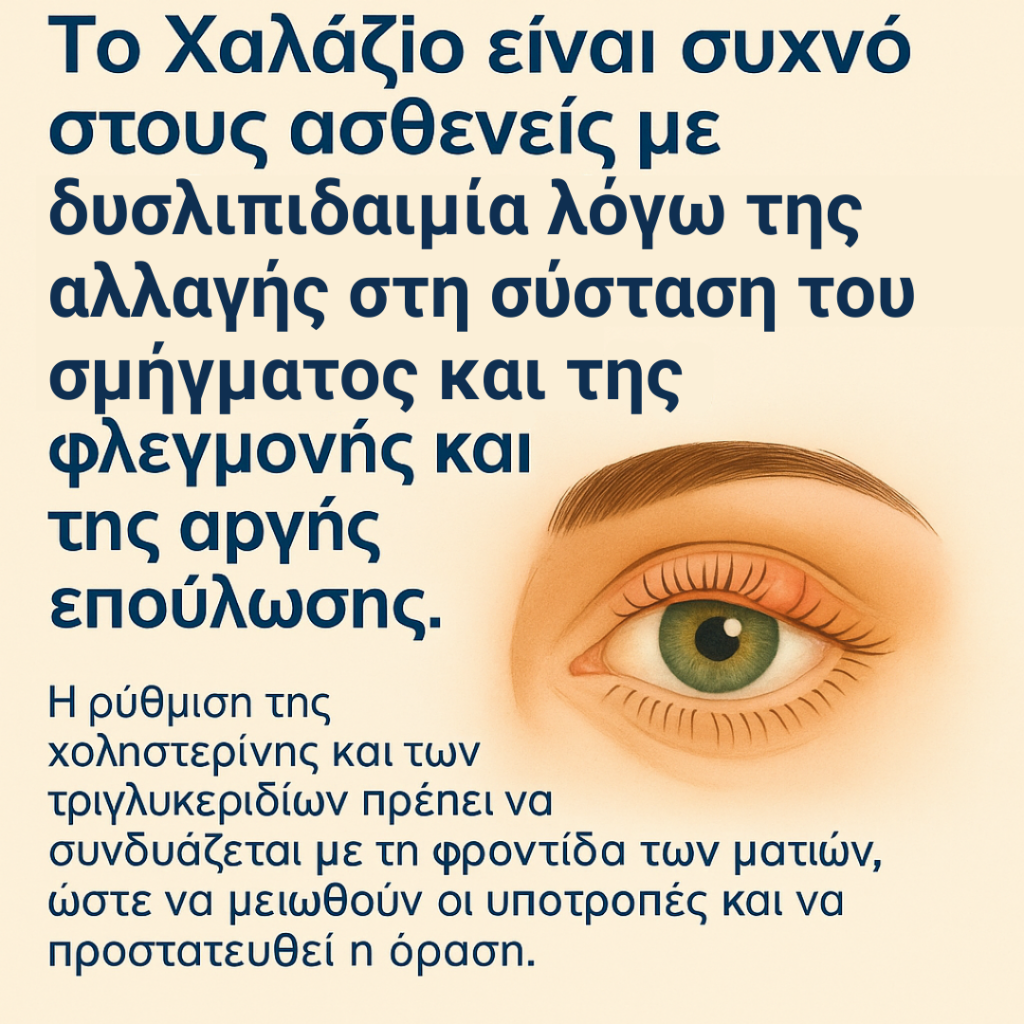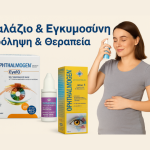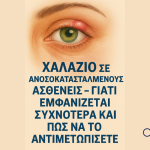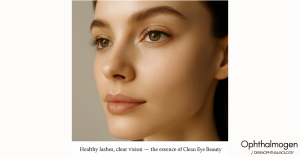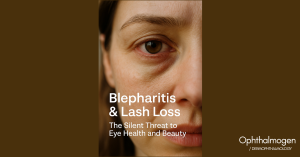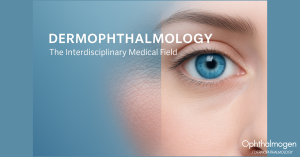
Introduction
Dyslipidemia – the abnormal levels of lipids in the blood (high cholesterol, elevated triglycerides, low HDL) – does not only affect the heart and blood vessels. It also impacts the skin, the Meibomian Glands, and ocular health.
One of the common problems seen in these patients is chalazion, a chronic inflammatory cyst on the eyelids. In people with dyslipidemia, chalazion is more frequent, more resistant, and more likely to recur.
Why Do Patients with Dyslipidemia Have Increased Risk of Chalazion?
- Thicker Meibomian Secretion
High cholesterol and triglycerides alter the composition of the Meibomian Gland secretions. The meibum becomes thicker and stickier, blocking the gland orifices and leading to chalazion formation.
- Pro-Inflammatory Microenvironment
Dyslipidemia promotes chronic low-grade systemic inflammation. This inflammatory background extends to the eyelids, increasing the likelihood of inflammation and chalazia.
- Link with Metabolic Syndrome
Many patients with dyslipidemia also present features of metabolic syndrome (obesity, hypertension, diabetes), adding further burden to ocular health.
- Slower Healing
In dyslipidemic individuals, tissues heal more slowly, meaning a chalazion may last longer and be more stubborn.
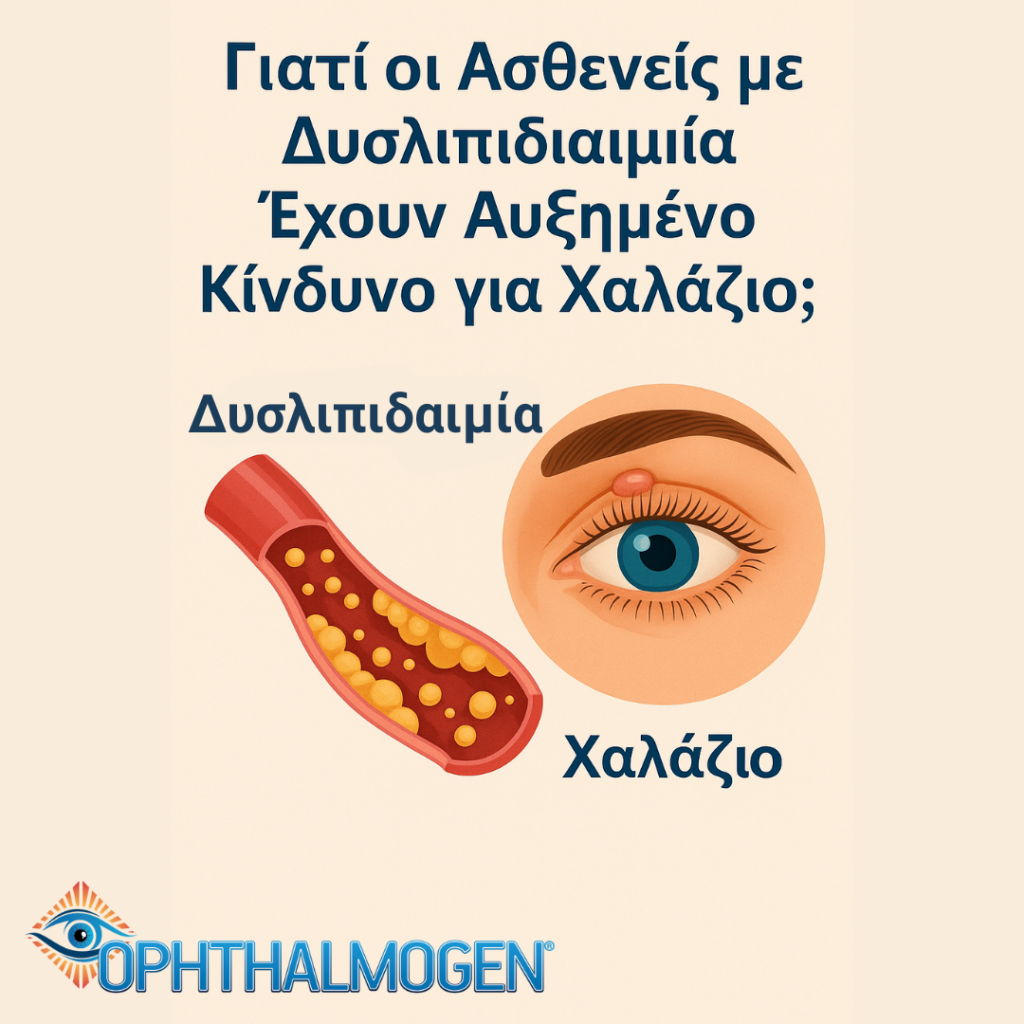
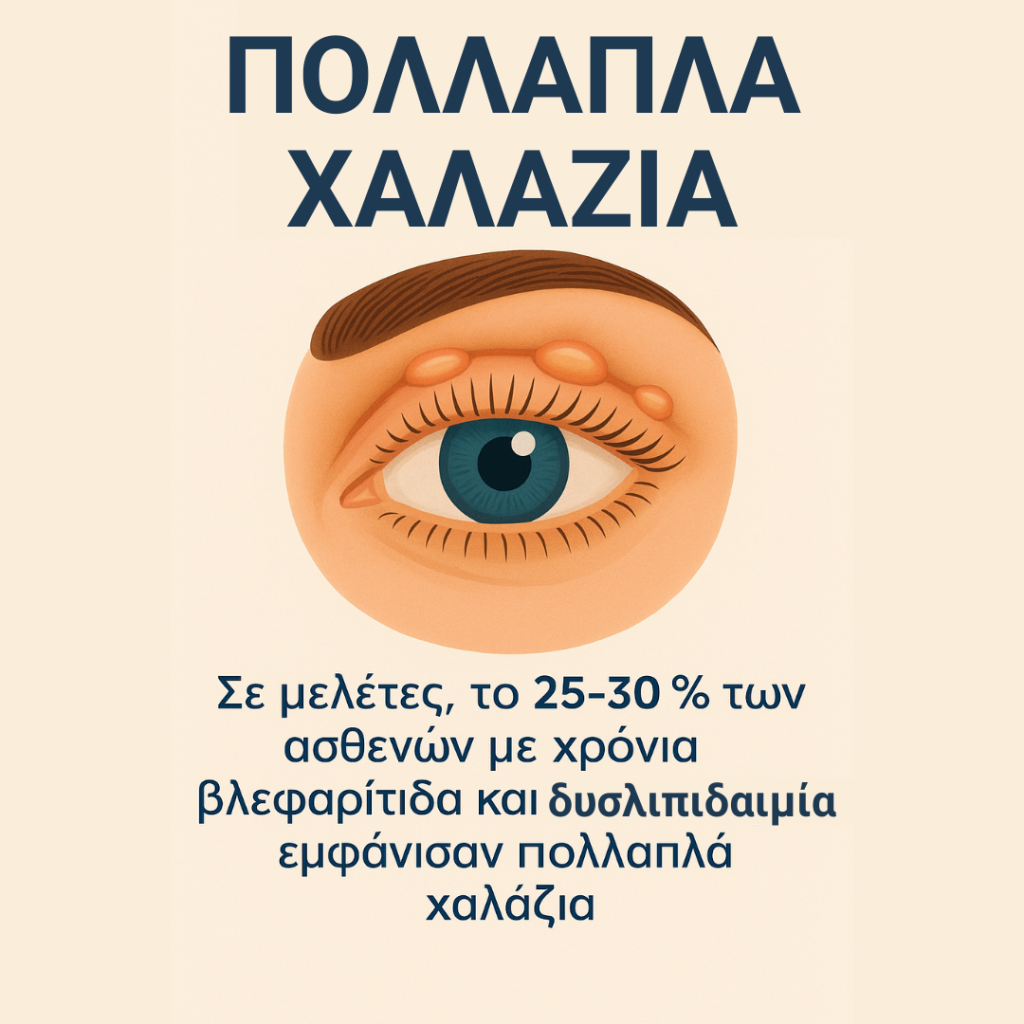
Statistics
- Patients with high LDL/triglycerides have a 1.5–2 times higher risk of chalazion.
- In clinical studies, 25–30% of patients with chronic blepharitis and dyslipidemia developed multiple chalazia.
- Obesity and metabolic syndrome increase this risk even further.
Symptoms in Patients with Dyslipidemia
Chalazion in this group typically appears:
- Larger and firmer than usual.
- With recurrent episodes in the same or opposite eyelid.
- Often accompanied by dry eye and irritation.
- Sometimes causing blurred vision if pressing on the cornea.
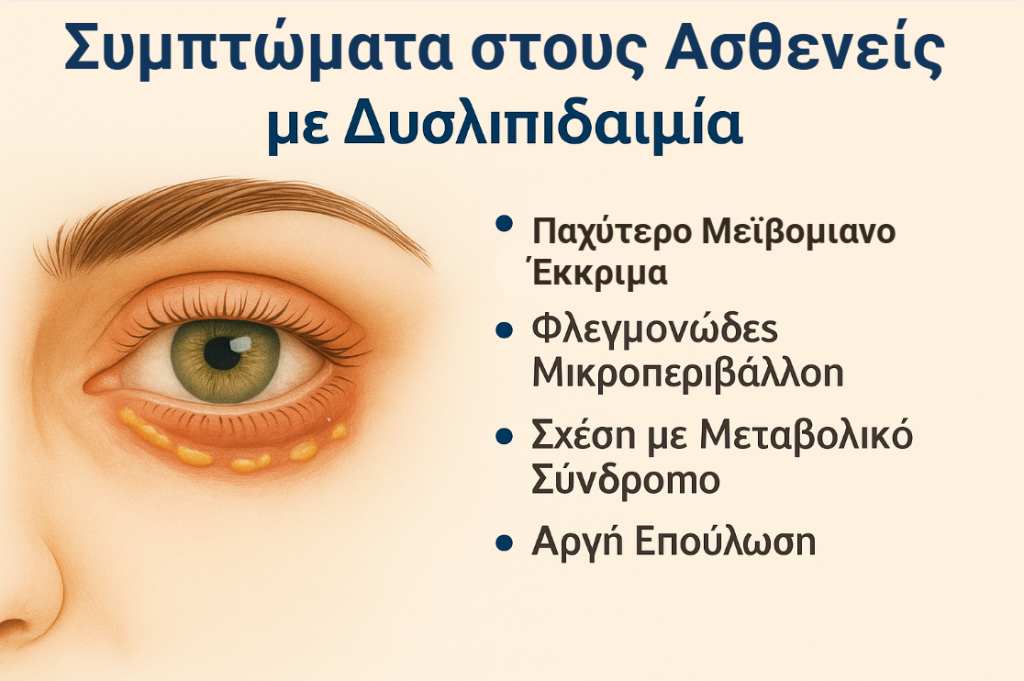
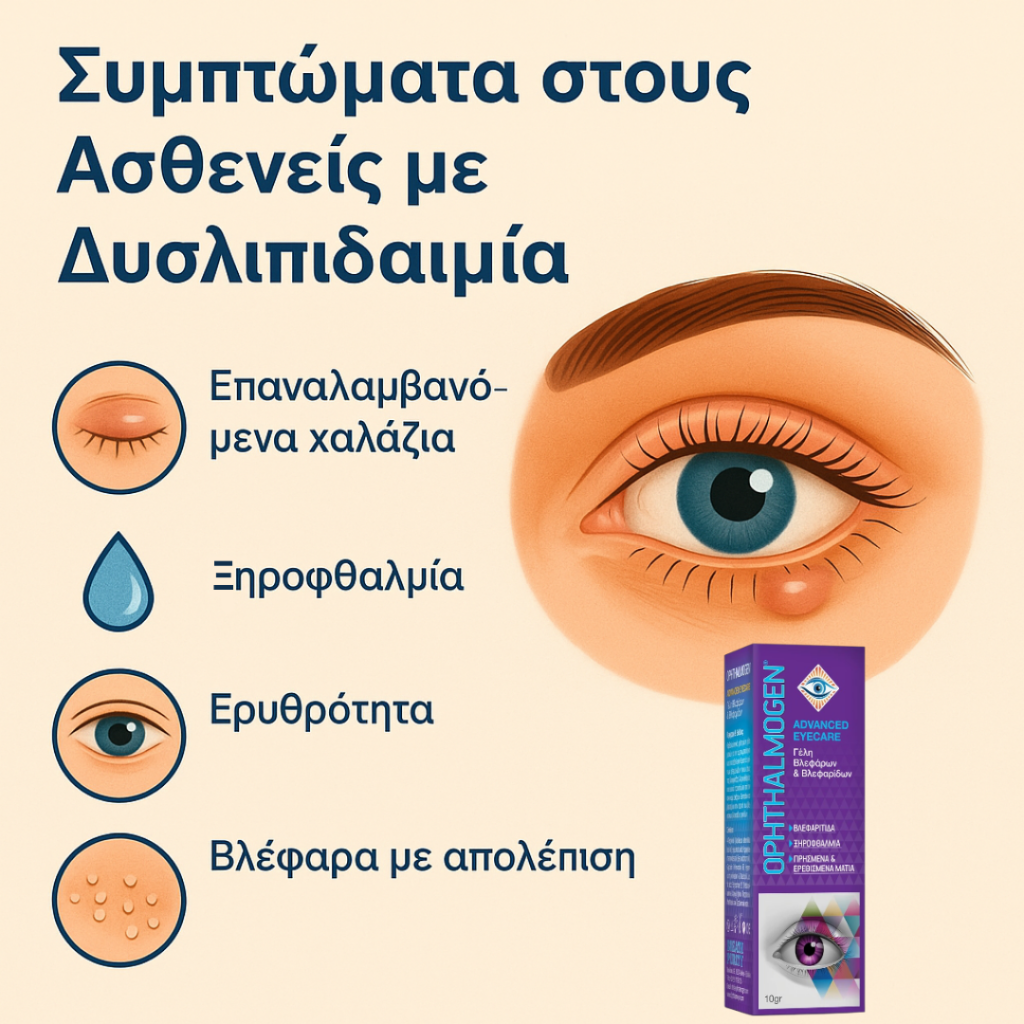
Complications
- Recurrent chalazia, causing chronic eyelid damage.
- Eyelash loss (madarosis) and misdirected lashes (trichiasis).
- Secondary infections.
- Aesthetic concerns due to frequent swelling.
Prevention – The Dermophthalmology Approach
Daily eyelid care is the best prevention strategy.
OphthalmogenEye10 – Single-Use & Safe Anywhere
- Single-use, self-heating sterile compresses – every application is hygienic and safe.
- Provides the desirable stable 40°C heat for 20 minutes, unlike compresses that cool quickly.
- Melts the thickened meibum commonly found in dyslipidemia patients.
- Can be used anywhere (home, travel, office) without equipment.
- Offers instant relief from heaviness, blurriness, and eyelid discomfort.
Ophthalmogen Gel – Targeted Massage, Hydration & Demodex Control
- Enables safe eyelid massage after thermotherapy, avoiding harmful rubbing.
- Softens the glands and facilitates lipid outflow.
- Contains moisturizing and soothing agents that reduce inflammation.
- Contributes to Demodex control, lowering the risk of recurrent chalazia and blepharitis.
- Protects eyelash health, preventing loss, trichiasis, and dystrophy.
Ophthalmogen Spray – Disinfection & Daily Strengthening
- Disinfects and hydrates eyelids and eyelashes throughout the day.
- Fights microbes and Demodex, enhancing daily eyelid hygiene.
- Can be applied multiple times a day, even over makeup.
- Provides cooling comfort and freshness, ideal for screen users and contact lens wearers.
- Maintains periocular skin clean and balanced, crucial for dyslipidemia patients with oily or inflamed skin.
Additional Support
- Naviblef: Daily cleansing to remove microbes, oil, and Demodex.
- Artificial Tears: Navitae Plus, Hylo-Comod, Thealoz Duo, Systane, Refresh, Visionlux Plus.
- Omega-3 Supplements:Allvita Eyes, Solgar, Minami, Lamberts.
Lifestyle Advice for Patients with Dyslipidemia
- Control lipid levels with diet, exercise, and medication.
- Daily Ophthalmogen eyelid and eyelashes hygiene
- Avoid excessive makeup and always perform proper removal.
- Regular check-ups with both ophthalmologist and dermatologist.
Medical Support (if needed)
- Tobradex / Dexamytrex for inflammation.
- Antibiotic drops or ointments in case of infection.
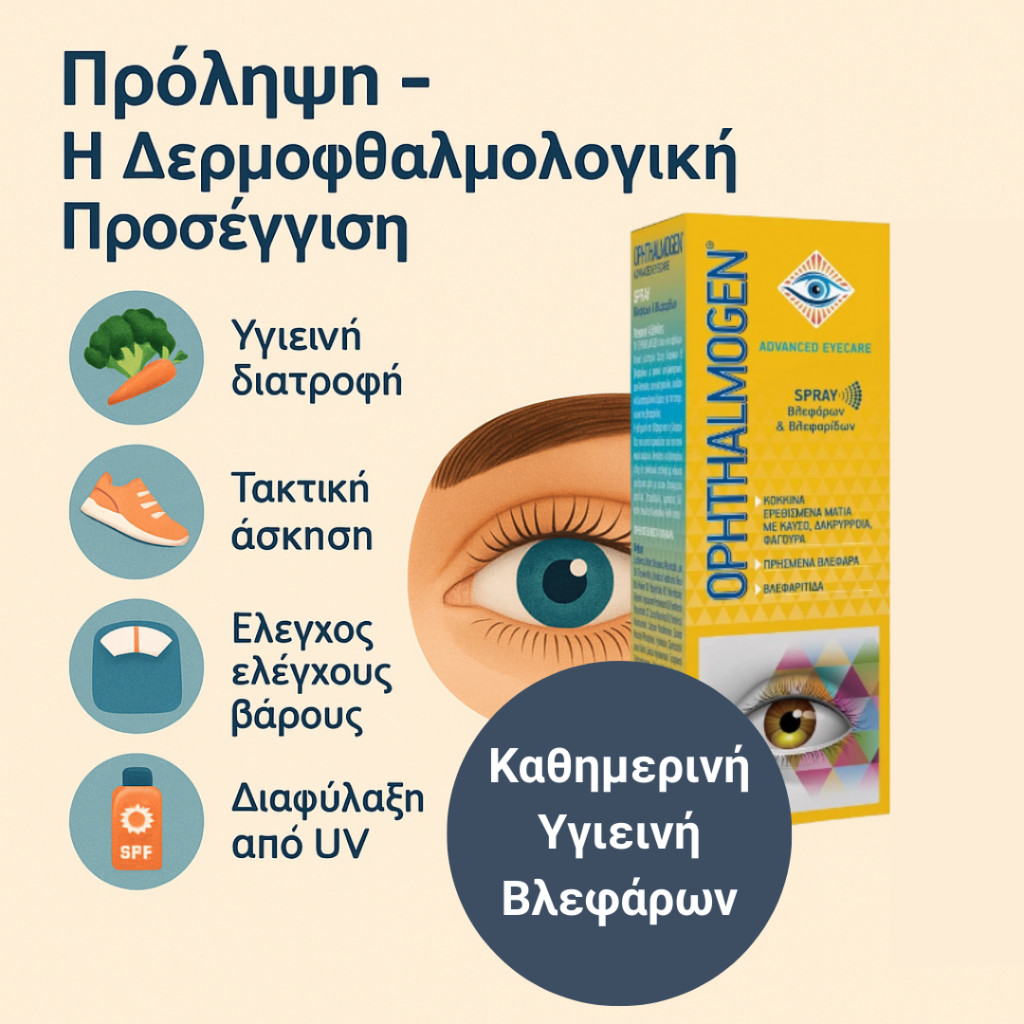
Conclusion
Chalazion is common in patients with dyslipidemia due to altered Meibomian secretions, inflammation, and delayed healing.
The Dermophthalmology approach with the Ophthalmogen line (Eye10, Gel, Naviblef, Spray, MeiboEvacuators), combined with artificial tears and omega-3 supplements, provides the most complete strategy for prevention and treatment.
Caring for the eyes must go hand-in-hand with controlling cholesterol and triglyceride levels to reduce recurrences and protect vision.
Step into the world of Dermophthalmology – get informed now! (dermophthalmology.com)
